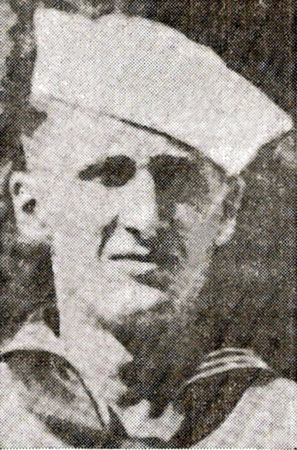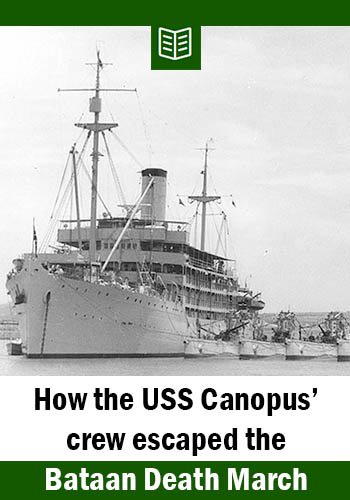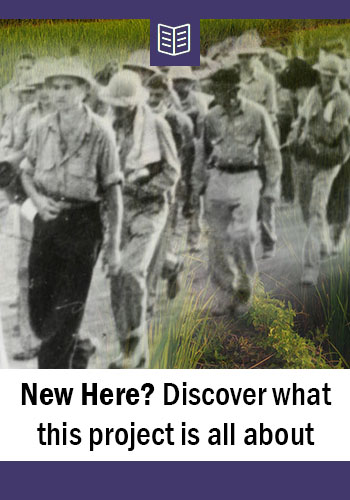This post contains some graphic, war-related content.
US forces won’t hold out until morning.

That was the word coming to the US Navy men anchored in Mariveles Harbor, southern Bataan Peninsula, the night of April 8-9, 1942, at the beginning of WW2. Surrender was imminent.
But, then, a glimmer of hope.
The USS Canopus‘ crew would be allowed on the “The Rock” — an island-turned-American-military-base just two miles across the water from Mariveles Harbor.
Escape was at hand. But first there was work to do.
28-year-old Warrant Machinist Lynn C. Weeman and several others boarded a motor launch and sped — not toward the safety of The Rock — but toward the raging Battle of Bataan itself. They needed to pick up the US Navy demolition squads who had been exploding the on-shore storage tunnels.
Pick up these men, then high-tail it to Corregidor island.
All around Weeman, flashes of light continually illuminated the dark, nearly moonless night as Allied troops on Bataan destroyed supplies and ammunition — not wanting them to fall into enemy hands.
Suddenly the hillside in front of him erupted in a gigantic, earth-shattering explosion.
From Monroe, MI, to the Great Lakes Naval Training Center
Mariveles Harbor in The Philippines is a world away from the western shores of Lake Erie, where Lynn Clayton Weeman grew up.
But, for a land-locked, Midwest native, Lynn spent an extraordinary amount of his life on the water.

He was born April 10, 1913, in Monroe, Michigan, about 40 miles south of Detroit. Lynn was the third of 8 children born to Warner and Gertrude Weeman. The Weemans were a Michigan farming family; both Warner and Gertrude were born in Michigan, as were their parents.
So Lynn grew up on a farm and, in 1930, graduated from Ida High School in the town next to Monroe.
But working the land wasn’t Lynn’s future. In September 1931, the 18 year old enlisted in the US Navy as a seaman. Interestingly, his naval training also took place in the Midwest — at the Great Lakes Naval Training Center, near Chicago and on Lake Michigan.

shown in this panoramic picture likely taken sometime in the 1920s. Image from Naval History and Heritage Command.
Sailing the world with the US Navy
The young sailor joined the crew of the USS San Francisco on February 10, 1934 — which was also the day the San Francisco was commissioned (placed in active service). That makes Weeman part of the heavy cruiser’s original crew.
Heavy cruisers were designed and built for ship-to-ship surface warfare. But Weeman didn’t see much, if any, battle during his 6 or so years on the San Francisco. Instead, Weeman sailed the Caribbean and the western US coast, participating in training assignments and other operations.
In 1939, he and the San Francisco crew sailed entirely around South America on a goodwill tour.
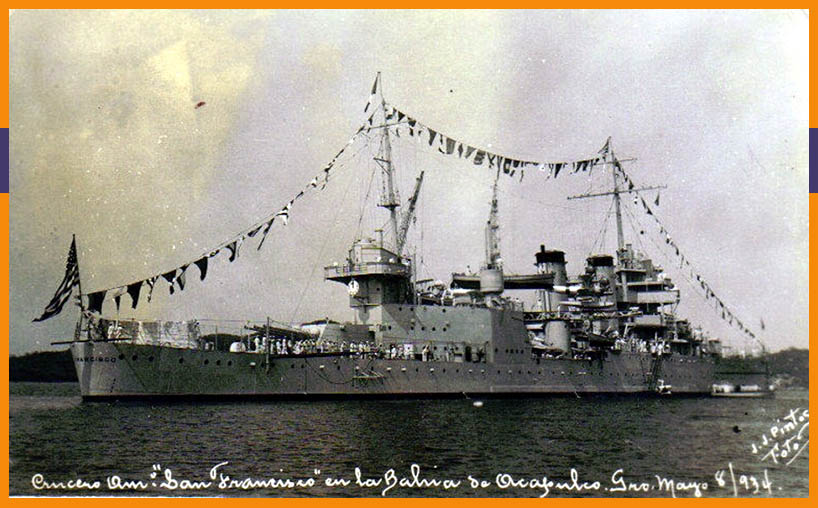
The farmer’s son brought his hard-work ethic to the Navy, and Weeman worked his way through the naval ranks. By the late 1930s, he was a Watertender 1st Class, responsible for tending the fires and boilers in the steam-engine room.
Sometime in 1940, he became Chief Machinists Mate, which made him a non-commissioned officer. In this role, he maintained and repaired heavy equipment on board the ship.
Then, in January 1941, Weeman earned the rank of Machinist, which is a Warrant Officer role (above enlisted and below commissioned). The former young, Midwest recruit was no longer an enlisted sailor. He was an officer who had progressed quite far in his career.
Near miss onboard the USS Canopus
His new rank came with a new ship assignment — to the submarine tender USS Canopus.
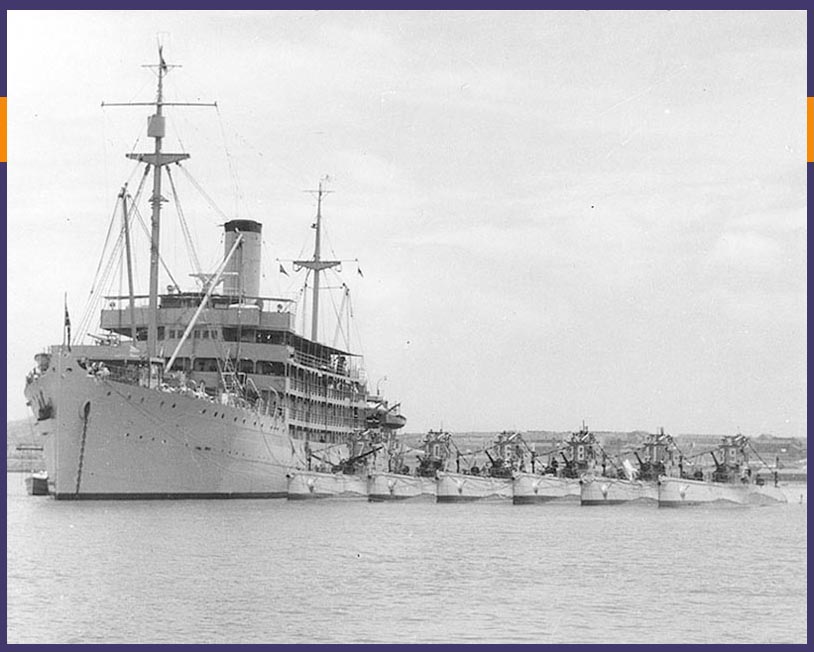
The Canopus sailed the eastern Pacific, especially to The Philippines and China, carrying food, fuel, torpedoes, supplies, maintenance equipment, and even relief crews for various US submarines.
When the Japanese attacked Pearl Harbor (on December 7, 1941), Weeman and the Canopus were anchored at Manila. And there he witnessed the Japanese attack US bases near Manila in the days following.
By month’s end, the Canopus moved from Manila to Mariveles Harbor at the southern tip of Bataan Peninsula. While there, a 500-pound armor-piercing bomb hit the ship, went through all decks, and exploded. Several men in the engine rooms — where Machinist Weeman likely spent much of his time — were killed.
Weeman survived.
Escaping the Bataan Death March
WW2 in the Pacific was not going well for the Americans during these early days. Fast-moving Japanese forces quickly over ran Luzon (the island that Manila and Bataan Peninsula are on). The Canopus and other ships were unable to leave, held at bay by a blockade of Japanese ships. And in early April 1942, word came that the Battle of Bataan was ending.
US forces would surrender.
That meant US military needed to destroy most everything on Bataan — supplies, gasoline, ammunition, and ships. Even the Canopus.
In the early hours of April 9, 1942, her crew backed the Canopus into deep water, then sunk her. Weeman was on the last motor launch to leave the ship.
The launch headed toward the eastern shore of Mariveles Harbor, where they’d pick up some sailors, then head to the relative safety of Corregidor island — and avoid being captured by the Japanese.
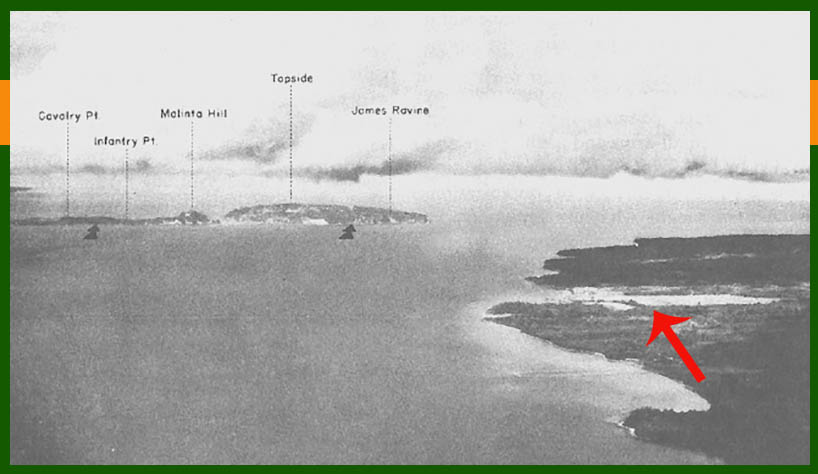
Weeman and Alma Salm sat near each other under the motor launch’s canopy, watching the flashes from detonations across Bataan and chatting over the thunderous explosions.
Suddenly, just 200 yards in front of them, a hillside exploded. The force almost threw the men from the launch. The detonation, explained Salm, “hurtled massive chunks of rock down through the canopy.”
Machinist Lynn C. Weeman never spoke again.
“His head had been practically severed by the falling stone missiles,” Salm continued in what may be the only written account of Weeman’s death, “while I only felt a few small pebbles no larger than peas rain gently on me.”
The next day — April 10 — would have been Weeman’s 29th birthday.
At rest in Manila
Today, Machinist Weeman is buried in the Manila American Cemetery just outside of Manila.
He’s in Plot A, Row 1, Grave 188.
He likely was first buried in a temporary cemetery on Corregidor, since he died en route to the island. His remains were reinterred at the Manila American Cemetery in the 1960s.

Machinist Weeman and the American Legion
18 days after Machinist Weeman’s death, his father, Warner, registered for the WW2 draft. It was a requirement, not personal choice. All men ages 45-60 had to register in this “Old Man’s Draft.”
I find myself wondering whether Warner Weeman already knew about his son’s death as he filled out that draft form. And I also wonder if anyone other than Alma Salm ever recorded the details of Weeman’s death.
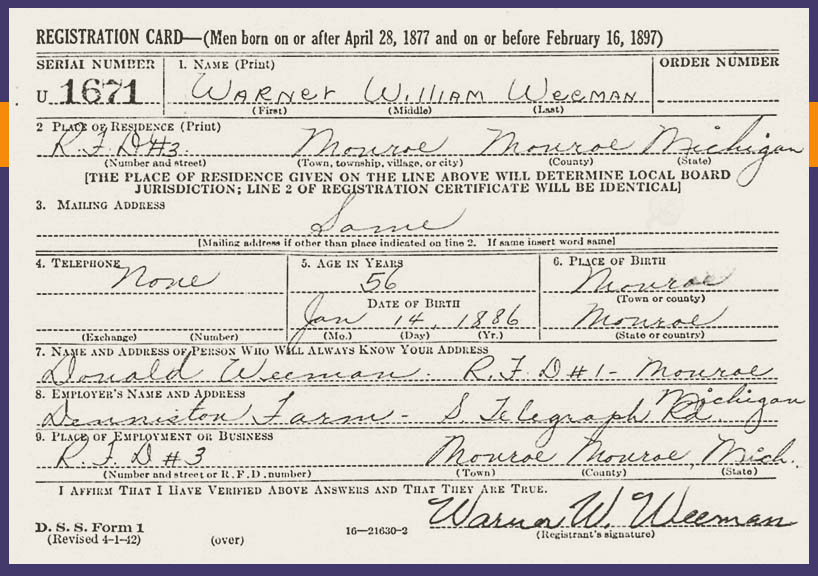
Lynn C. Weeman is supposedly the second person from Monroe, Michigan, killed in action during World War 2. He is the namesake for Lynn C Weeman American Legion Post (#514) in Ida, Michigan.
The surprisingly common resource for finding ww2 stories
The most helpful resource for researching Machinist Weeman:
Google.
I used military records on Ancestry.com to get basic facts about Weeman’s life — then filled in context through Google searches. Here are two examples:
- Navy Muster Rolls told me he’d been on the USS San Francisco for 6 years. So I Googled the ship’s name. From that search, I found ship images and cruise details during the years Weeman was on board.
- Various military records helped me track Weeman’s rank through the years. I then did a LOT of Google searches to understand Weeman’s those ranks and associated job duties.
I also searched for “Lynn C Weeman” just to see what’s already written about him on the www. That’s how I learned about the American Legion Post named after him, that he was the second WW2 KIA from Monroe, Michigan, and that he attended the Great Lakes Naval Training Station.
So . . . if you find yourself staring blankly at a list of facts, dates, and places — try searching for those things on Google to see what context you can add to your family story. I think you’ll be pleasantly surprised.
Read next
Help us honor Machinist Weeman
You can help us honor and remember Lynn C. Weeman by sharing his story with friends and family. Thank you!
Sources
- Alma Salm, “How the USS Canopus’ crew escaped the Bataan Death March,” Luzon Holiday, online at https://www.anastasiaharman.com/2019/08/22/uss-canopus/#canopus.
- “AMERICAN LEGION LYNN C. WEEMAN POST #514 – IDA,” Bicentennial Blog, Monroe County Library System, online at https://monroe.lib.mi.us/bicentennial-blog/commemorating-our-heroes, accessed 28 August 2019.
- Ancestry.com. U.S., World War II Draft Registration Cards, 1942, Ancestry.com, database online, original data from United States, Selective Service System, Selective Service Registration Cards, World War II: Fourth Registration, records of the Selective Service System, record group number 147, National Archives and Records Administration.
- “Killed in Action,” Life Magazine, July 5, 1943, page 25, online, Google Books, accessed 20 February 2012.
- “Lynn C. Weeman,” American Battle Monuments Commission, online at https://www.abmc.gov/node/475998, accessed 27 Aug 2019.
- “Manila American Cemetery and Memorial,” pamphlet published by American Battle Monuments Commission, pp. 9-11, found online at American Battle Monuments Commission, accessed 27 August 2019.
- “Michigan Casualties, World War,” database online, entry for Lynn Clayton Weeman, Ancestry.com, accessed 28 August 2019.
- “New Orleans-class cruiser,” Wikipedia, https://en.wikipedia.org/wiki/New_Orleans-class_cruiser, accessed 28 August 2019.
- “On Eternal Patrol—Lost Submariners of WWII,” info submitted by Paul W. Wittmer, http://www.oneternalpatrol.com/weeman-l-c.htm, accessed 28 August 2019.
- Post 514, American Legion, online at https://centennial.legion.org/michigan/post514, accessed 28 August 2019.
- “Submarine Tender,” Wikipedia, online at https://en.wikipedia.org/wiki/Submarine_tender, accessed 19 August 2019.
- “USS Canopus (AS-9),” Wikipedia, found online at https://en.wikipedia.org/wiki/USS_Canopus_(AS-9), accessed 19 August 2019.
- “USS San Francisco (CA-38),” Wikipedia, https://en.wikipedia.org/wiki/USS_San_Francisco_%28CA-38%29, accessed 28 August 2019.
- U.S. Select Military Registers, 1862-1985, database online, Ancestry.com, original data from United States Military Registers, 1902–1985, Oregon State Library, Salem, Oregon.
- U.S. World War II Navy Muster Rolls, 1938-1949, database on-line, Ancestry.com, original data from Muster Rolls of U.S. Navy Ships, Stations, and Other Naval Activities, 01/01/1939-01/01/1949, A-1 Entry 135, 10230 rolls, ARC ID: 594996, Records of the Bureau of Naval Personnel, Record Group Number 24. National Archives and Records Administration, College Park, MD.
- “Watertender,” Military Wikia, https://military.wikia.org/wiki/Watertender, accessed 28 August 2019.
- “World War II and Korean Conflict Veterans Buried Overseas,” database online, entry for Lynn C. Weeman, Ancestry.com, accessed 28 August 2019.
- “World War II Navy, Marine Corps, and Coast Guard Casualties, 1941-1945,” database online, entry for Lynn Clayton Weeman, Ancestry.com, accessed 28 August 2019.
Images
- Image 1: Portrait of Lynn C. Weeman. Found online at “Mach Lynn C Weeman Memorial,” photo added by Sandra Knapp Smith, Find -a-Grave, https://www.findagrave.com/memorial/56774368, accessed 20 August 2019.
- Image 2: Lake Erie. Image licensed from Adobe Stock Images.
- Image 3: Great Lakes Naval Training Station. Image name: Naval Training Station Great Lakes, Ill., accession #: S-425, catalog #: S-425-C, Naval History & Heritage Command, donated by Frederick Cornman, online at https://www.history.navy.mil/our-collections/photography/numerical-list-of-images/nhhc-series/s-file/s-425-c-naval-training-station-great-lakes–ill-.html, accessed 28 August 2019.
- Image 4: USS San Francisco. “USS San Francisco (CA 38),” NavSource Online: Cruiser Photo Archive, http://www.navsource.org/archives/04/038/04038.htm, accessed 28 August 2019.
- Image 5: USS Canopus. Official US Navy image, image number 80-G-1014615, in the collections of the US National Archives and Records Administration, found online at Naval History and Heritage Command, Department of the Navy, https://www.ibiblio.org/hyperwar/OnlineLibrary/photos/sh-usn/usnsh-c/as9.htm, accessed 28 August 2019.
- Image 6: Mariveles Harbor. From Louis Morton, “Japanese Plans and American Defenses,” The War in the Pacific: The Fall of the Philippines (Washington, DC: Center of Military History, United States Army, 1953, found online at https://history.army.mil/books/wwii/5-2/5-2_29.htm, accessed 19 August 2019.
- Image 7: Manila American Cemetery. Image licensed from Adobe Stock Images.
- Image 8: WW2 Draft Registration Card. Ancestry.com. U.S., World War II Draft Registration Cards, 1942, Ancestry.com, database online, original data from United States, Selective Service System, Selective Service Registration Cards, World War II: Fourth Registration, records of the Selective Service System, record group number 147, National Archives and Records Administration.
